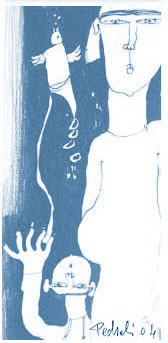Hormonal
treatments for the synchronisation of oestrus in dairy goats raised in the tropics.
V. J.
F. Freitas, D. Rondina, E. S. Lopes Júnior, D. 1. A. Teixeira
N. R. 0. Paula.
Reproduction,
Fertility and Development, 2004, 16, 415- 420. |
In tropical areas, local goats are often reported as being able to
reproduce throughout the year, whereas an influence of season is found
to be a factor when importing different dairy breeds. In these areas,
oestrus synchronisation in goats is of interest for both technical
(synchronisation of kidding, adjustment to forage availability or
to continuous milk supply) and genetic reasons (dissemination of improved
genotypes by AI). The use of a progestagen vaginal sponge combined
with equine chorionic gonadotrophin (eCG)-cloprostenol injections
remains an efficient tool to achieve synchronisation in temperate
and tropical zones. However, the oestrus synchronisation treatments
currently used for goats in tropical regions were originally developed
for goats bred in temperate regions. For this reason, several alternative
possibilities for improving the efficiency of the hormonal treatment
are evaluated. Oestrus synchronisation with luteolytic agents is efficient
(resulting in more than 70% of goats in oestrus) and it takes into
account female cyclicity. In developing regions of the tropics, the
use of buck teasing appears to be a promising approach to control
oestrus and ovulation. The use of this technique provides 60% of females
in oestrus within 5 days of introducing the bucks. Considering the
availability of nutrients as the ultimate regulator of reproduction
in the tropics, the control of nutritional condition is essential
before the use of hormonal treatments for oestrus synchro¬nisation
in goats bred in these regions takes place.
|

